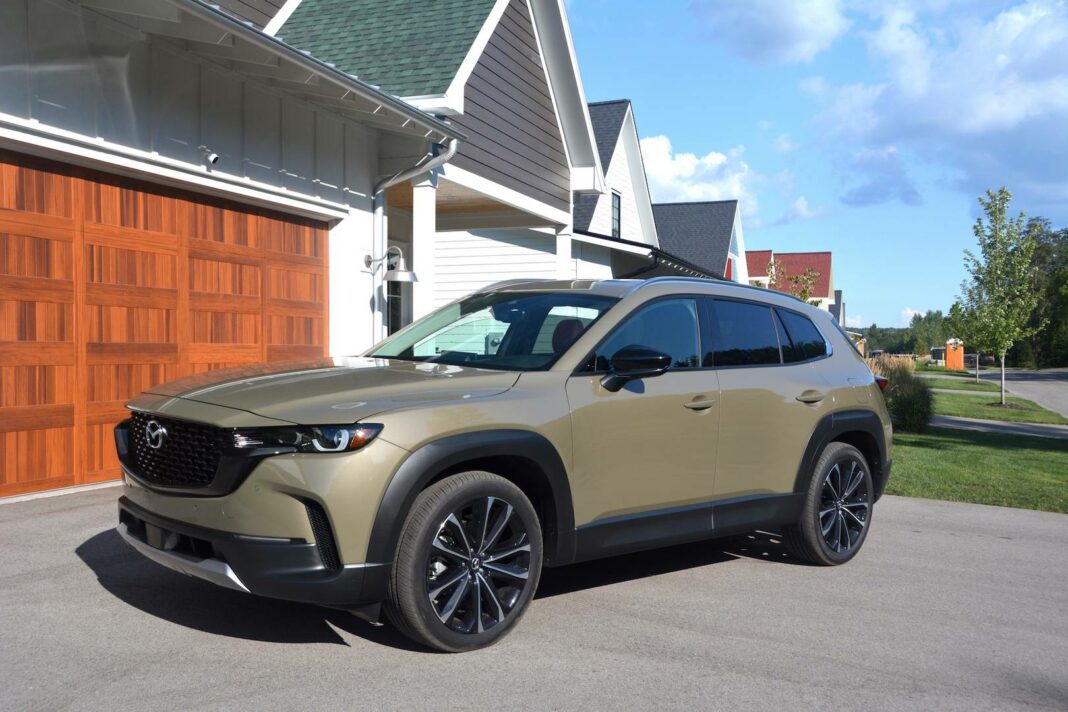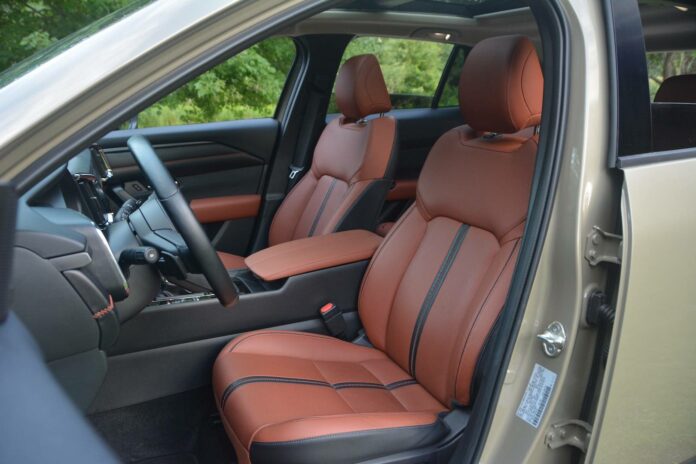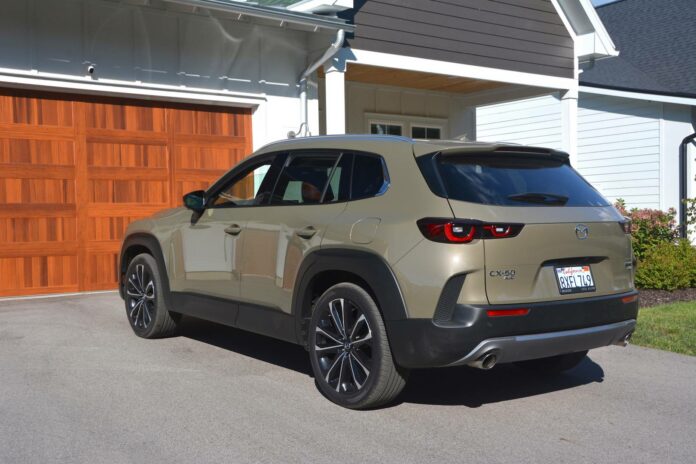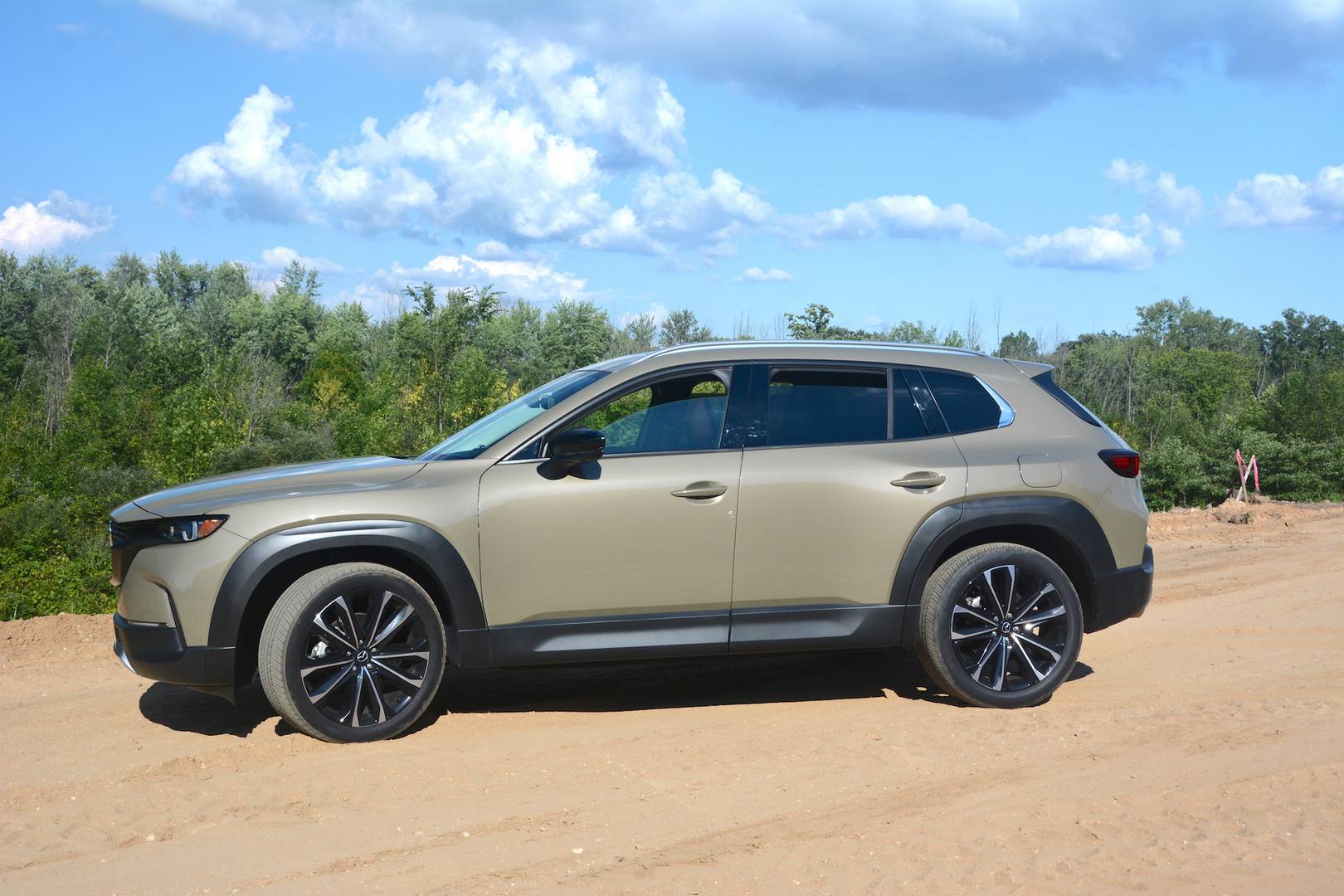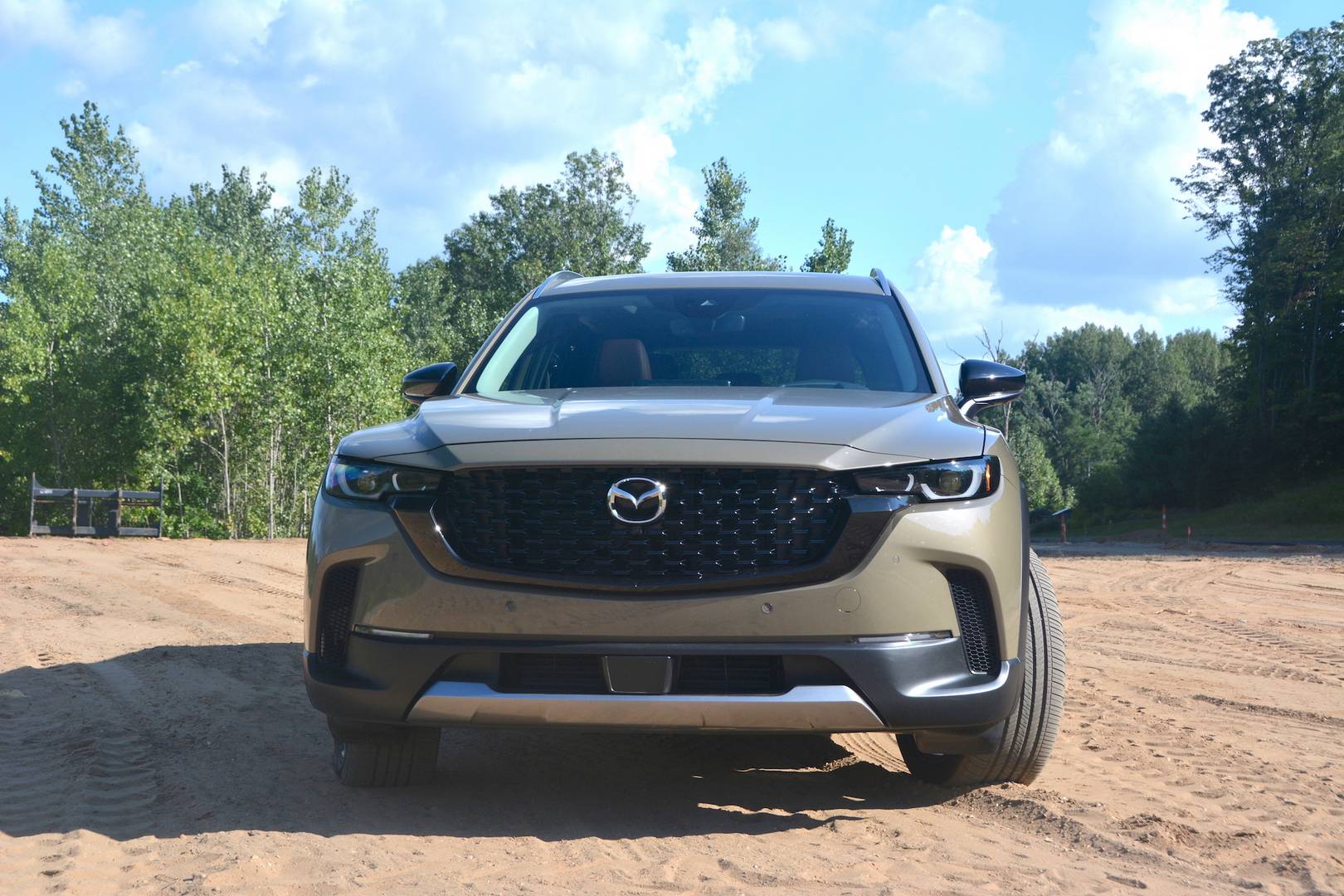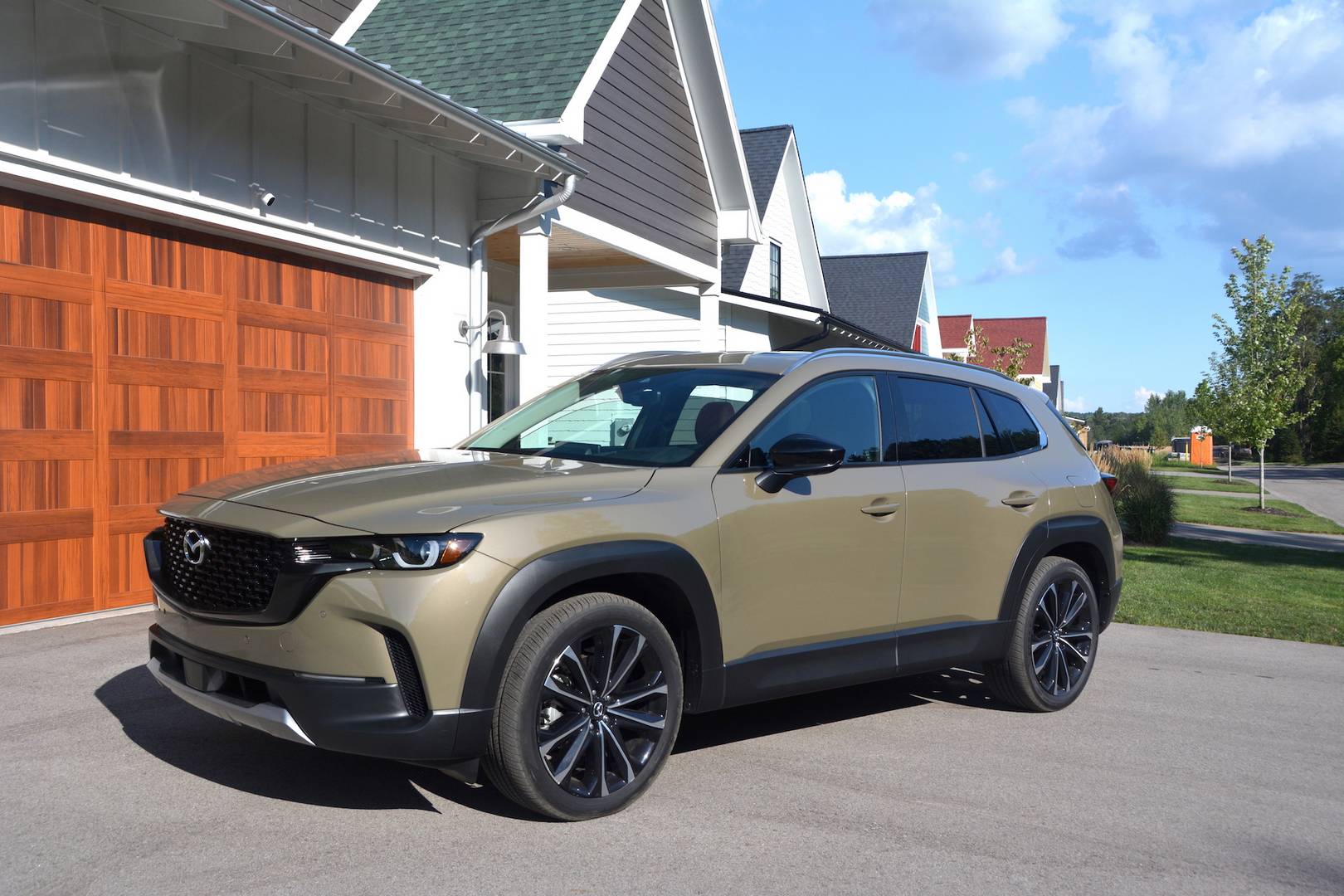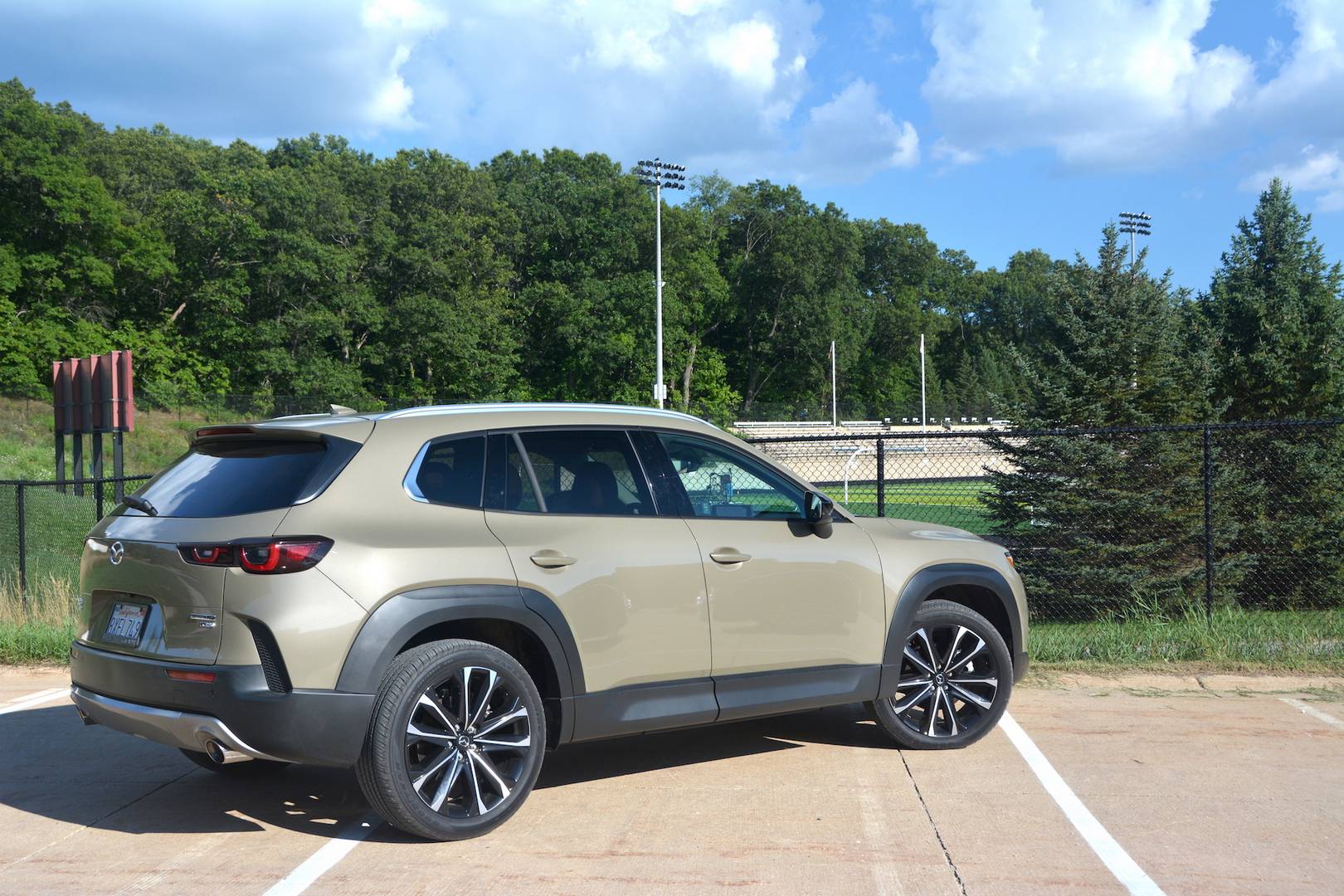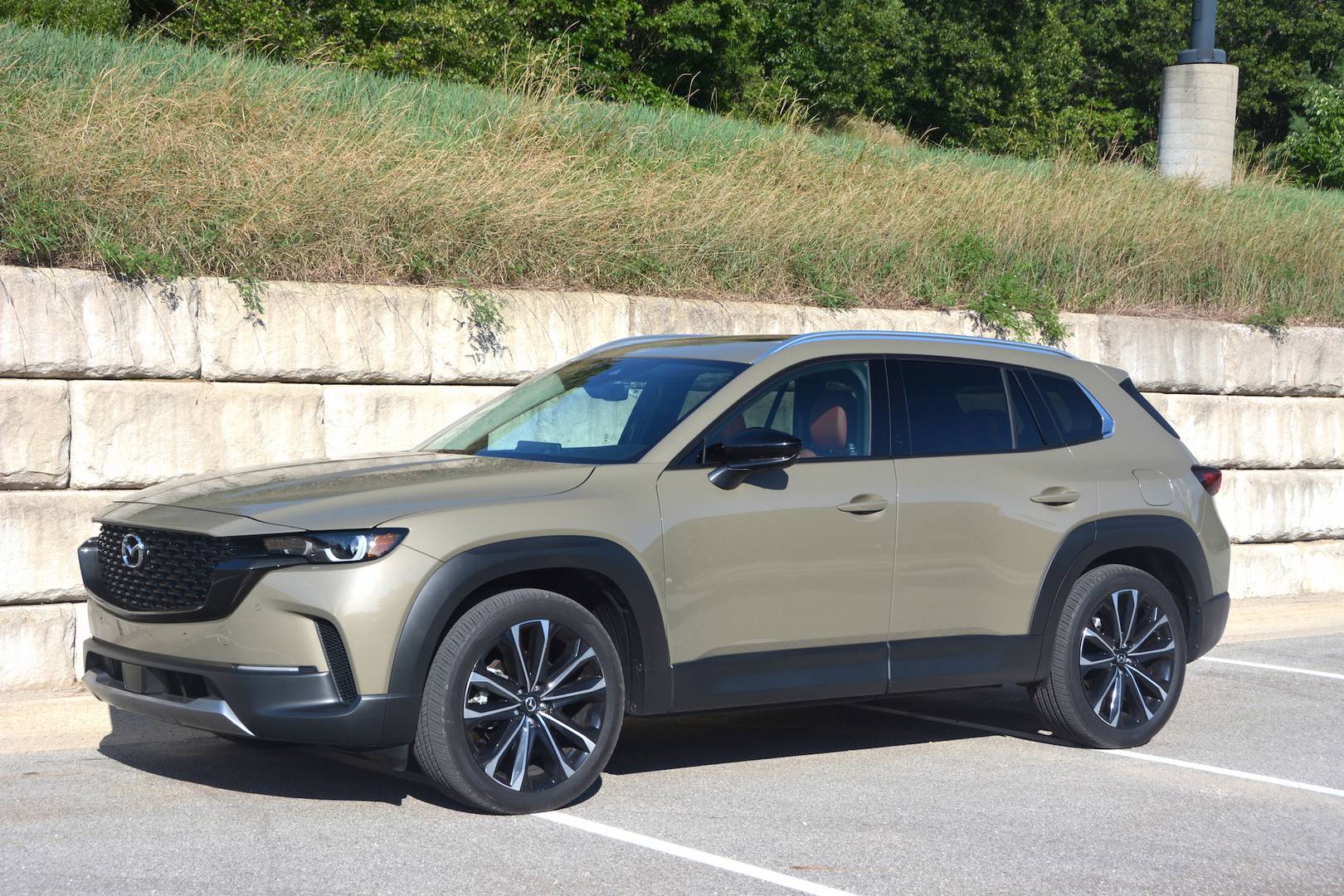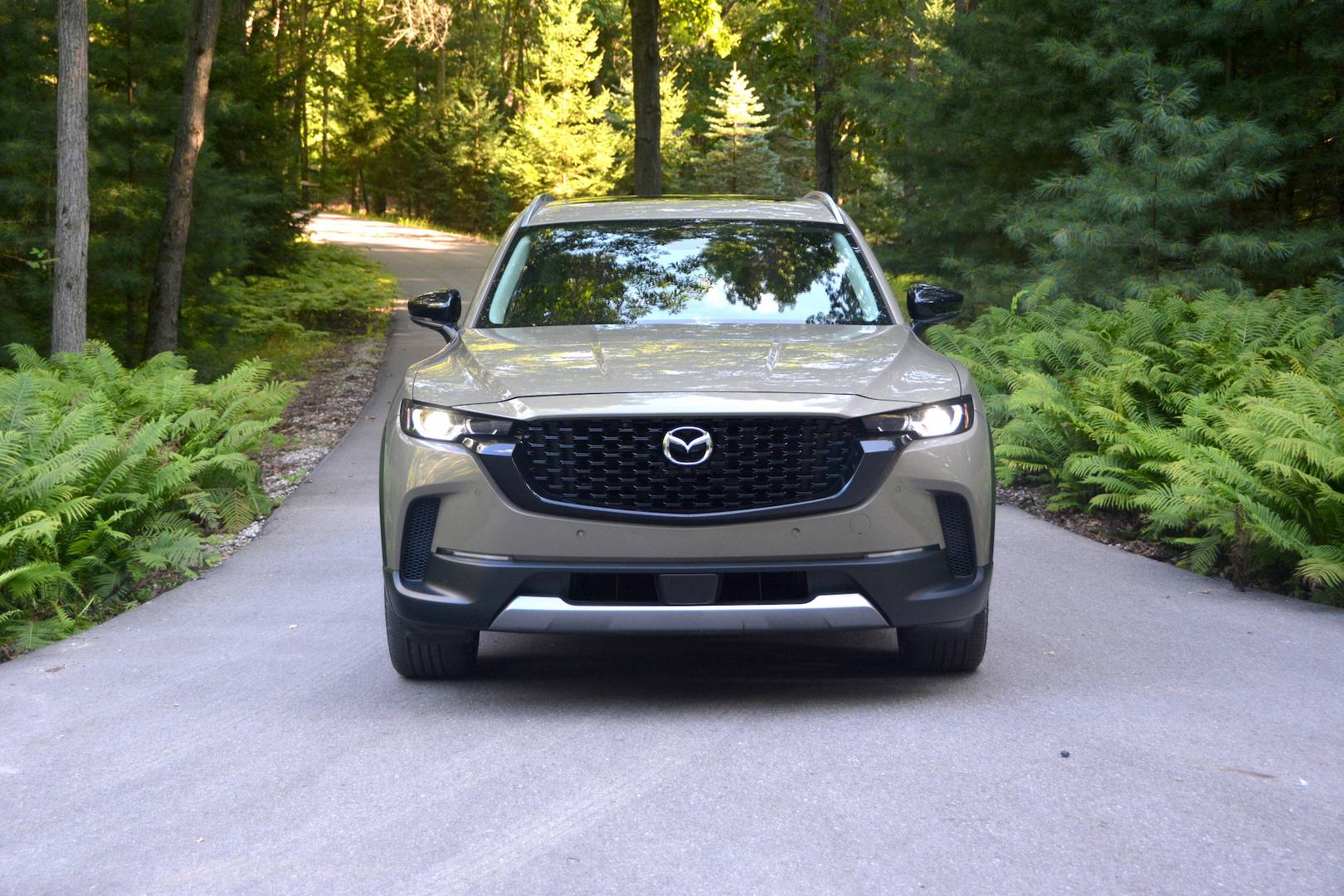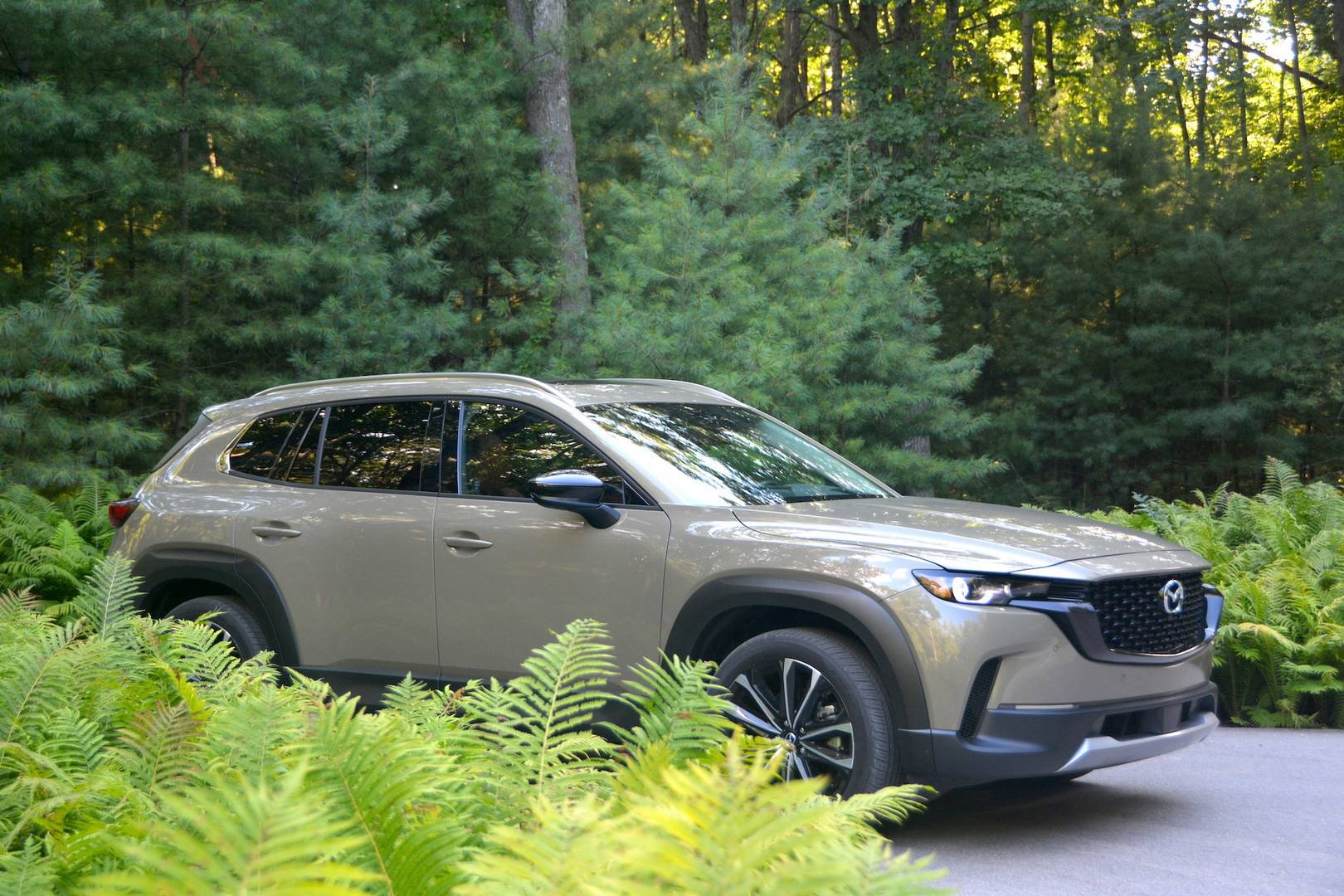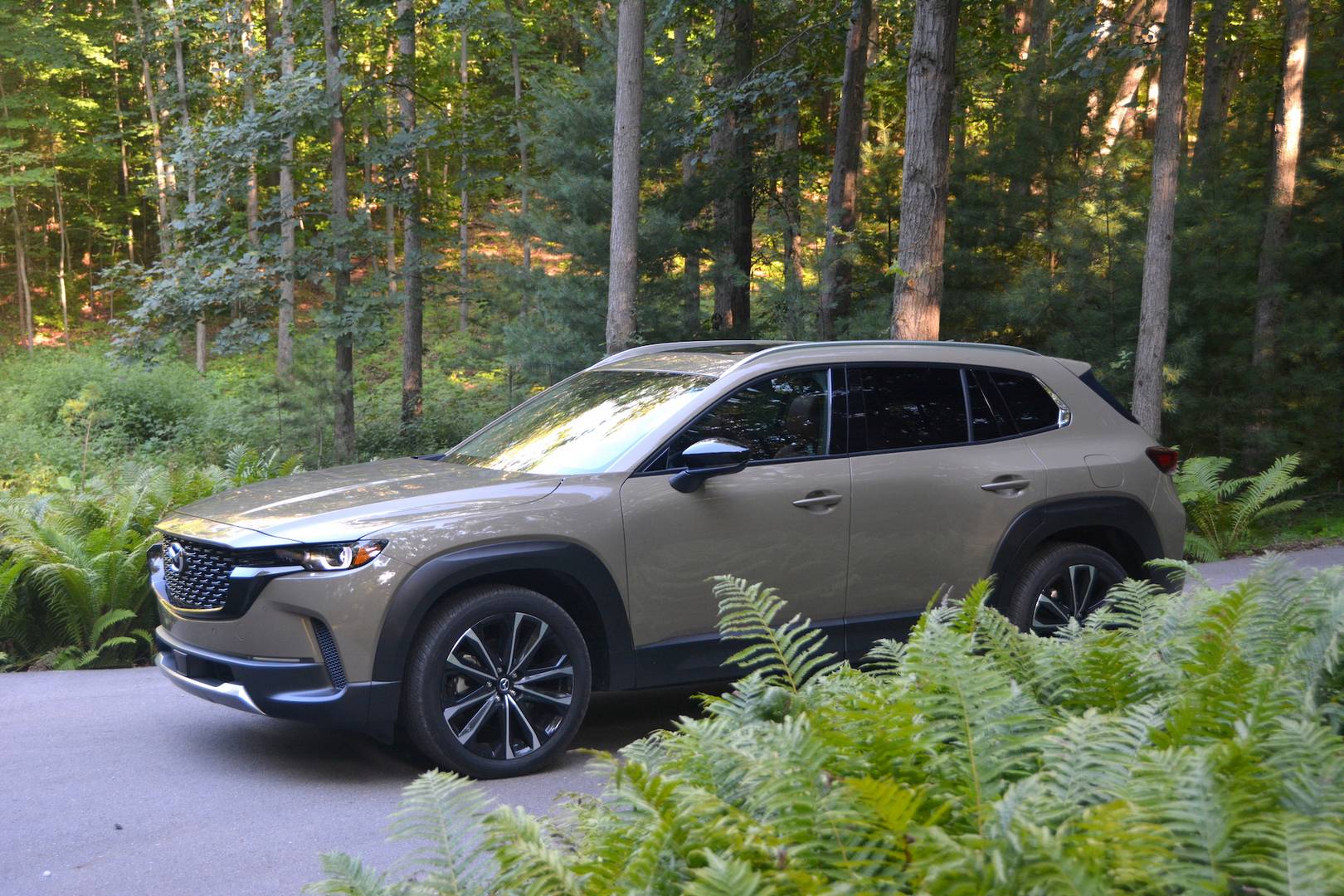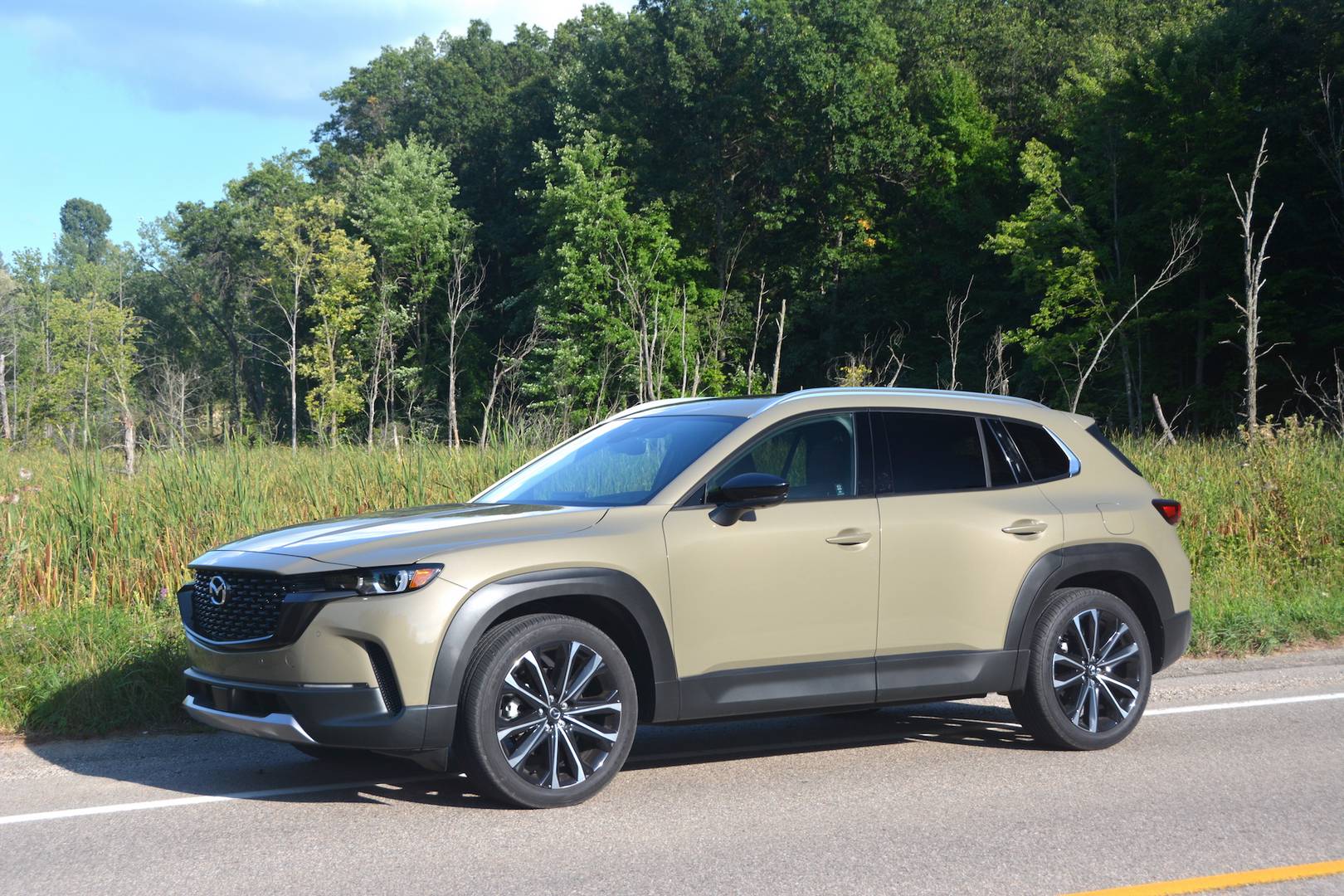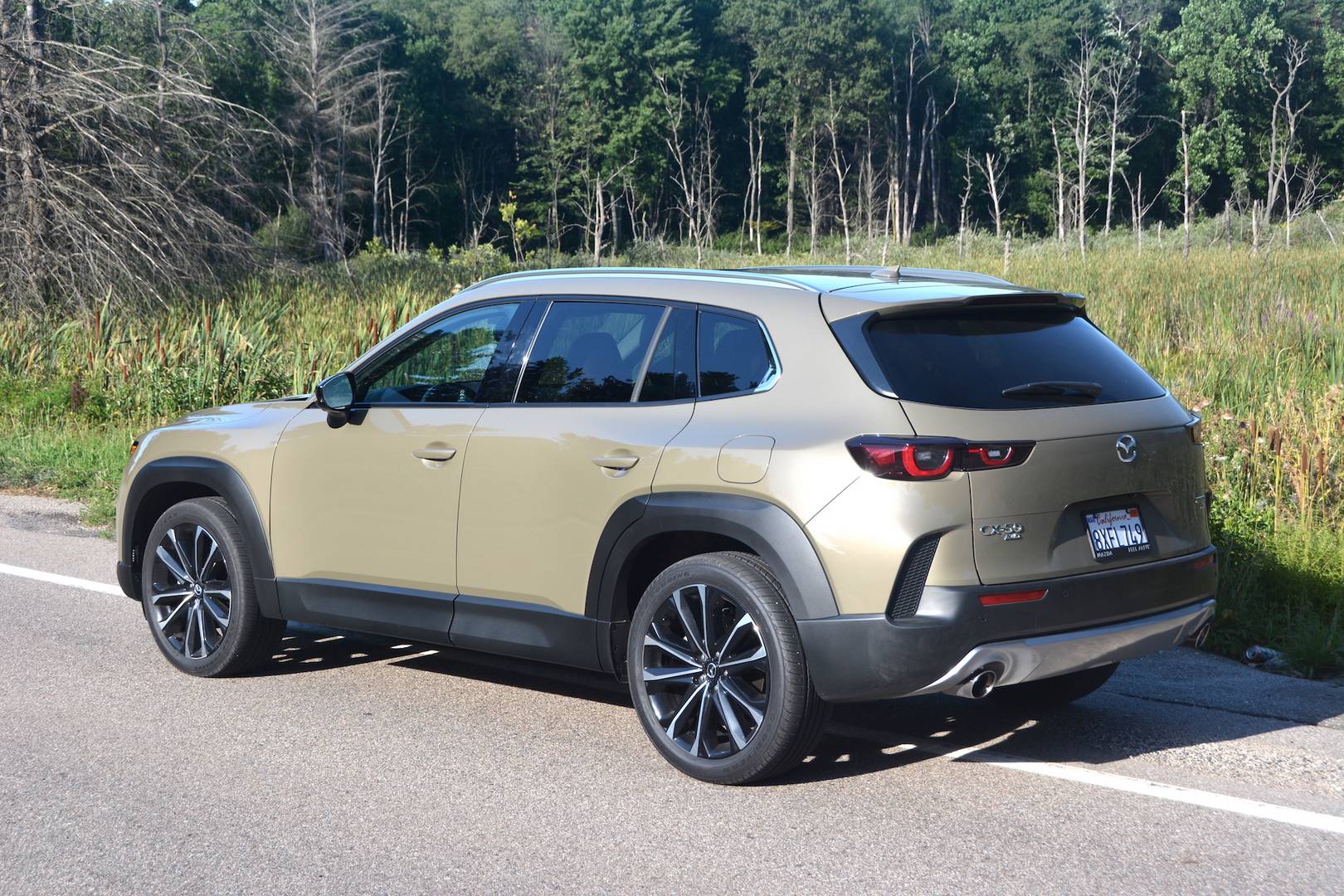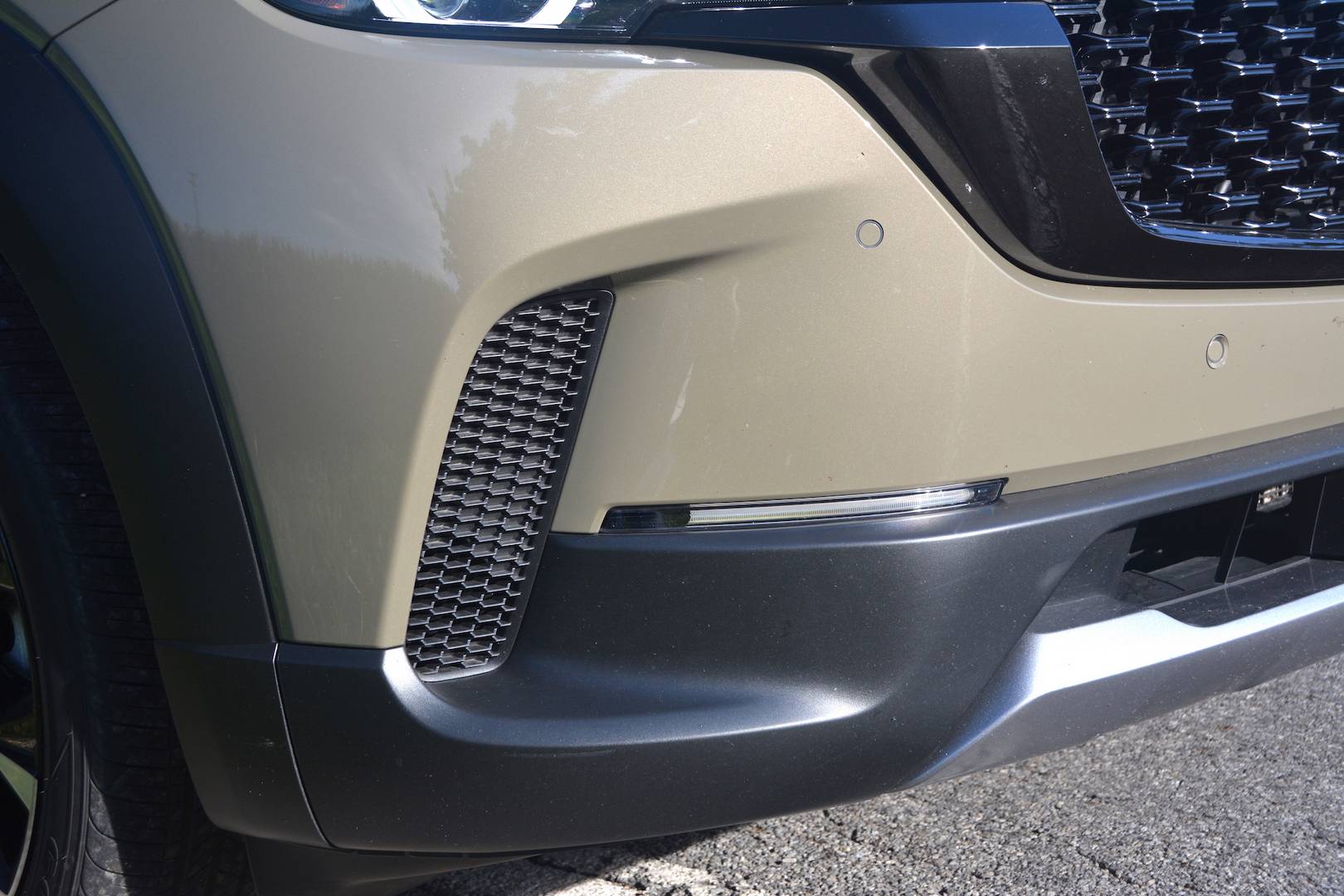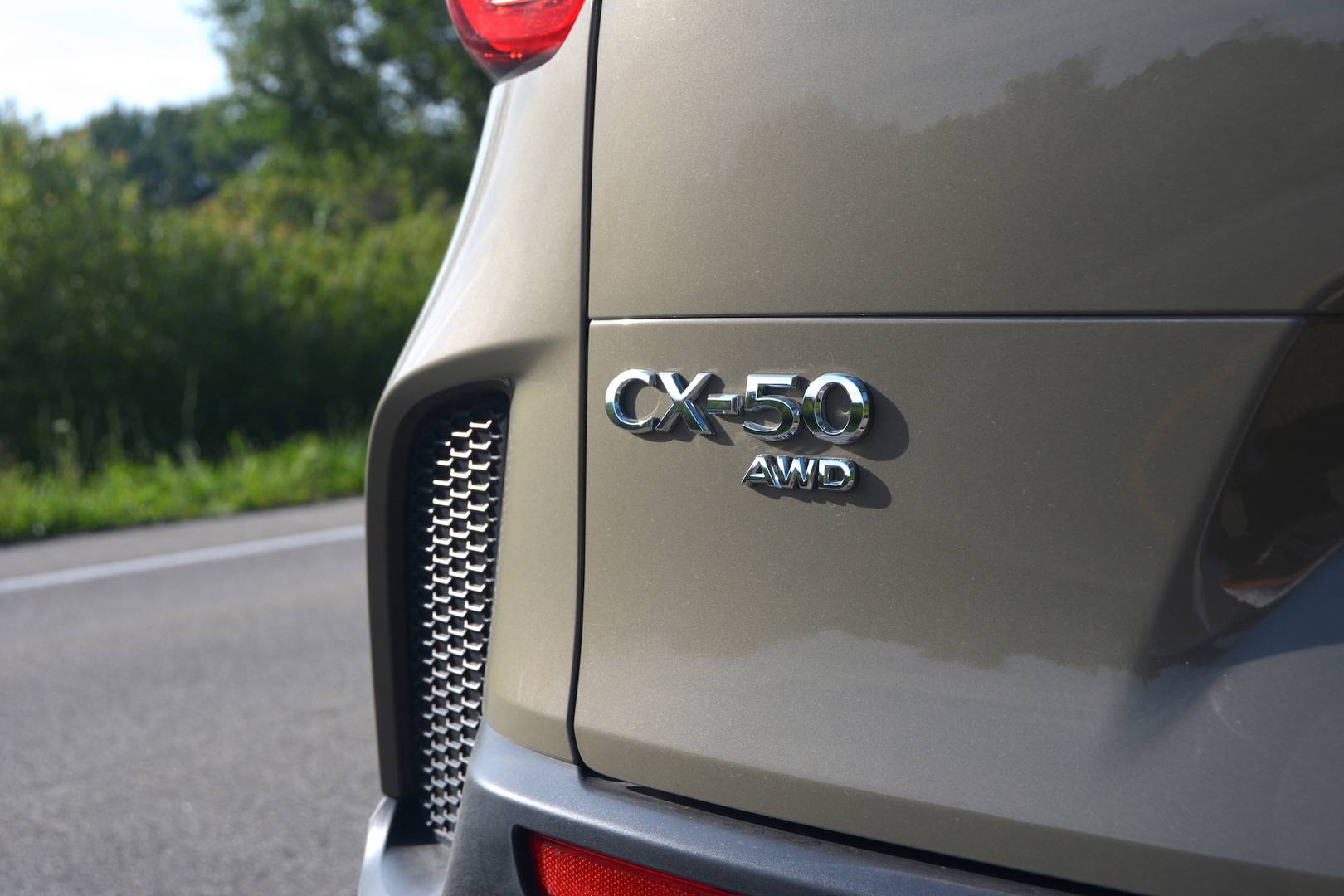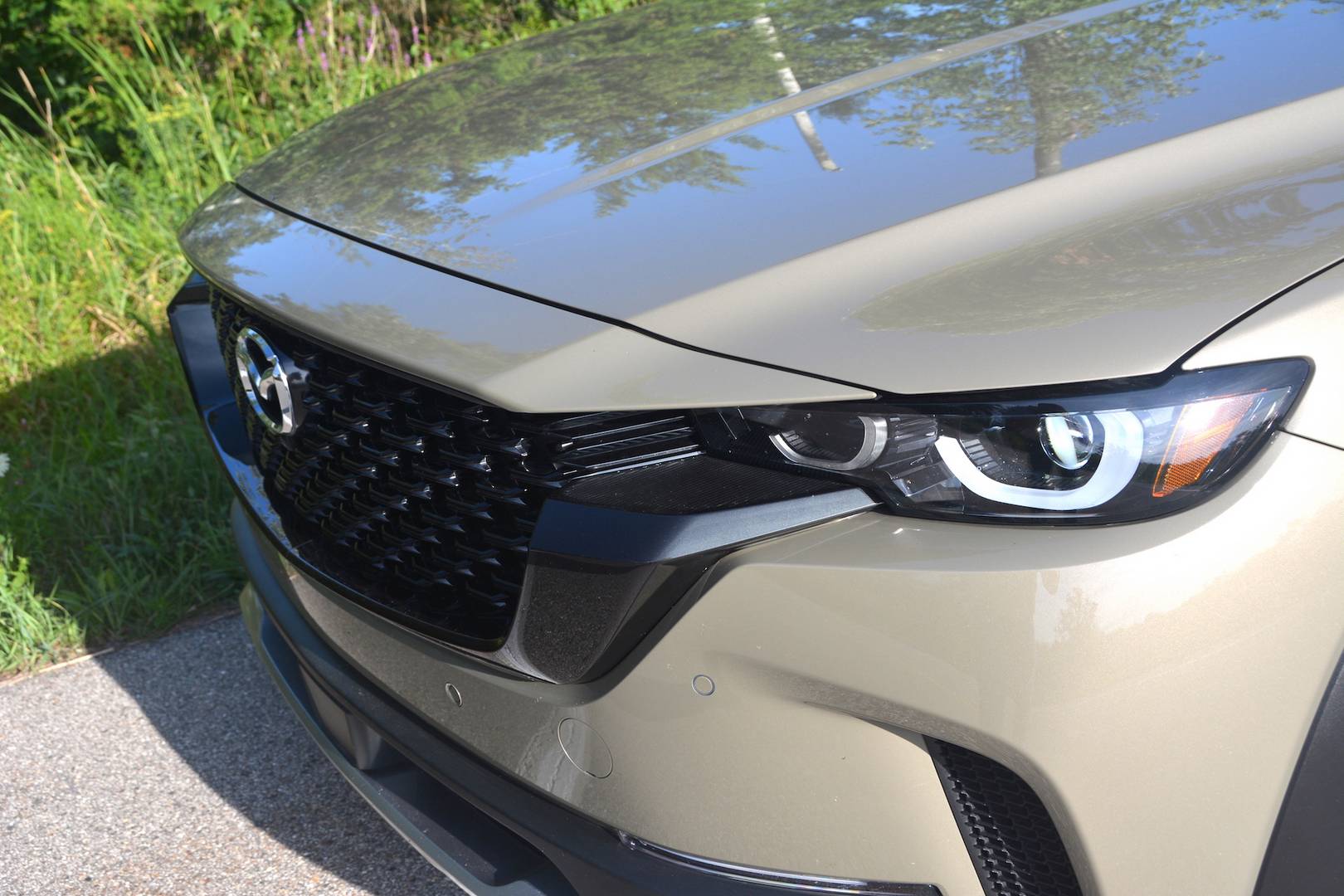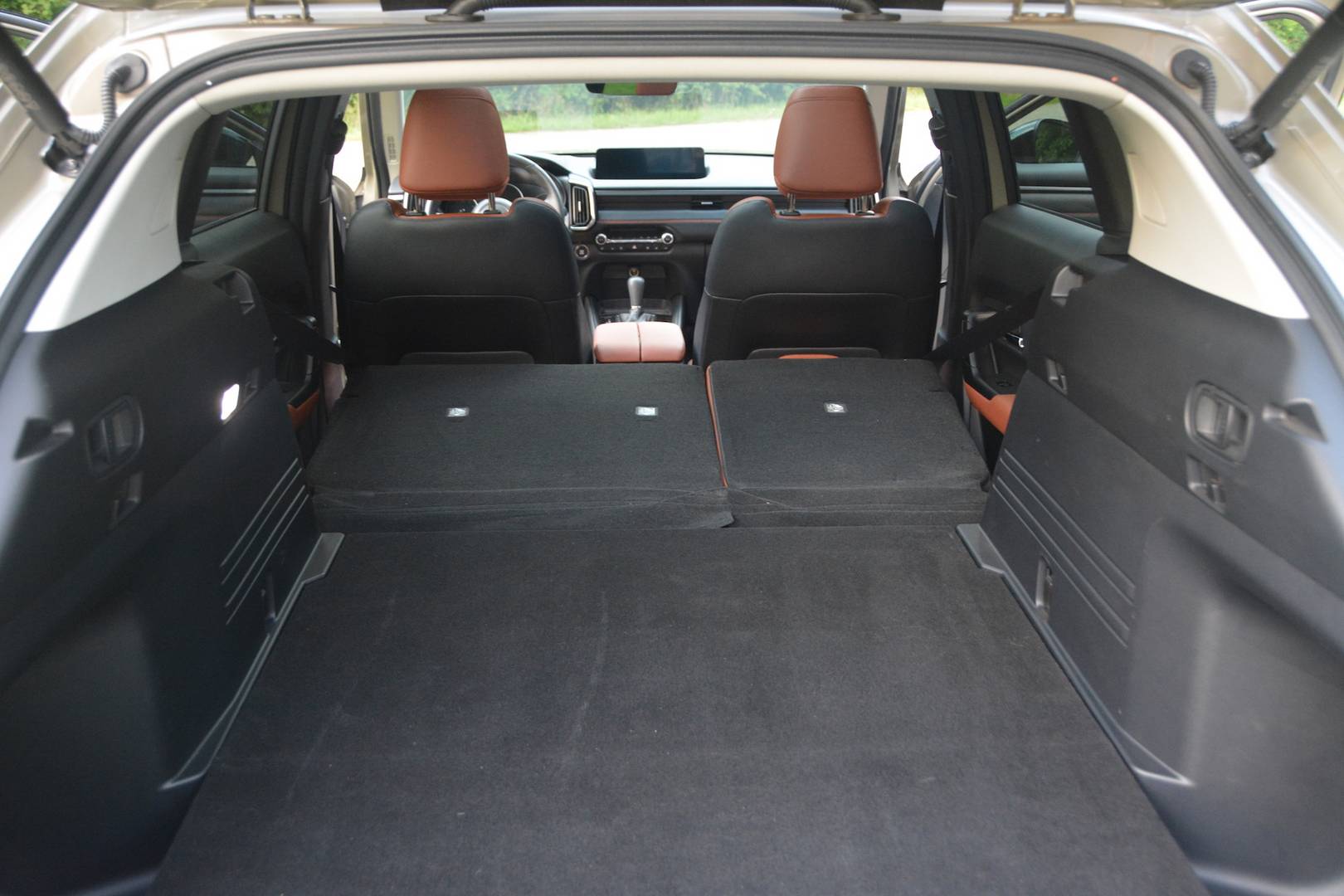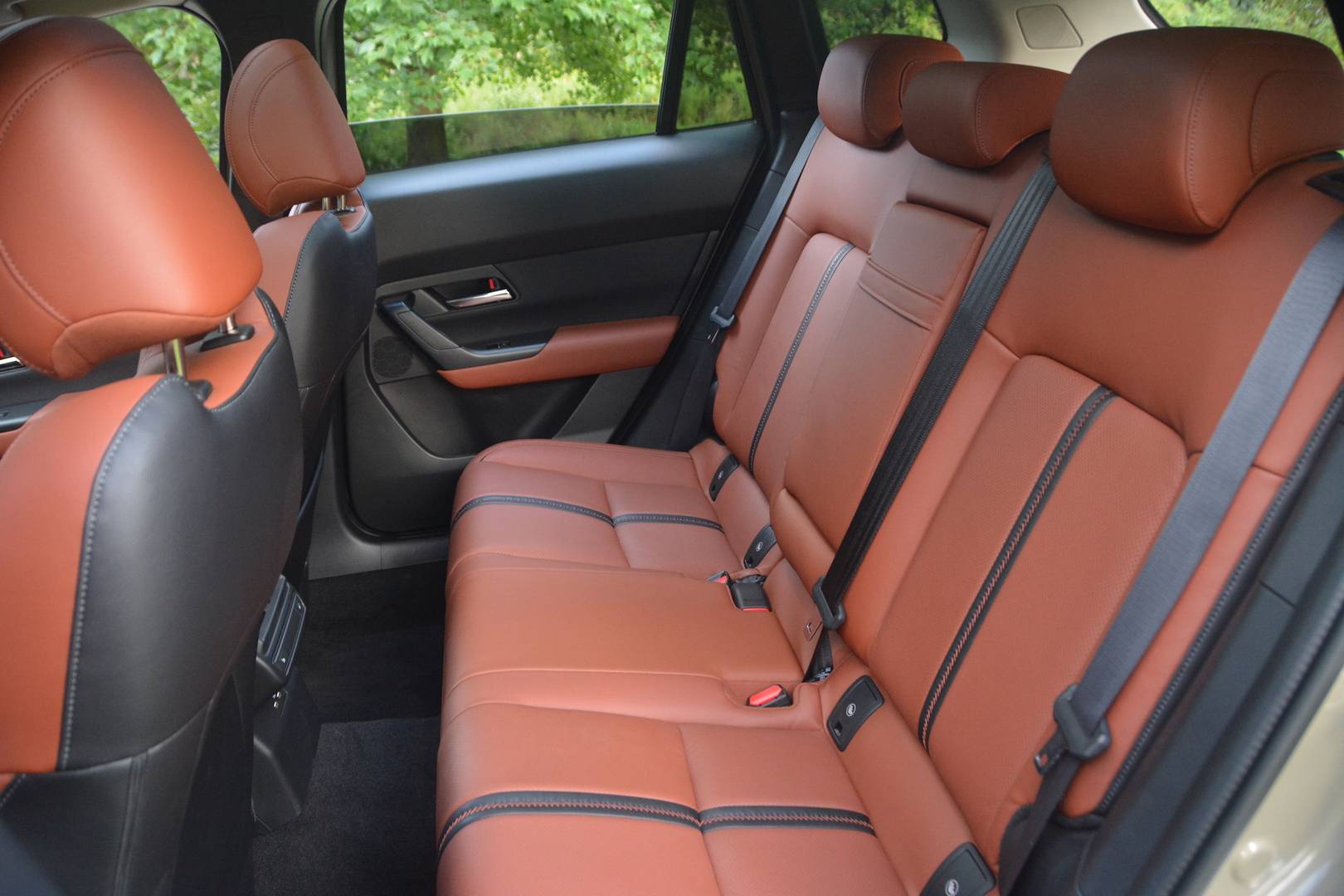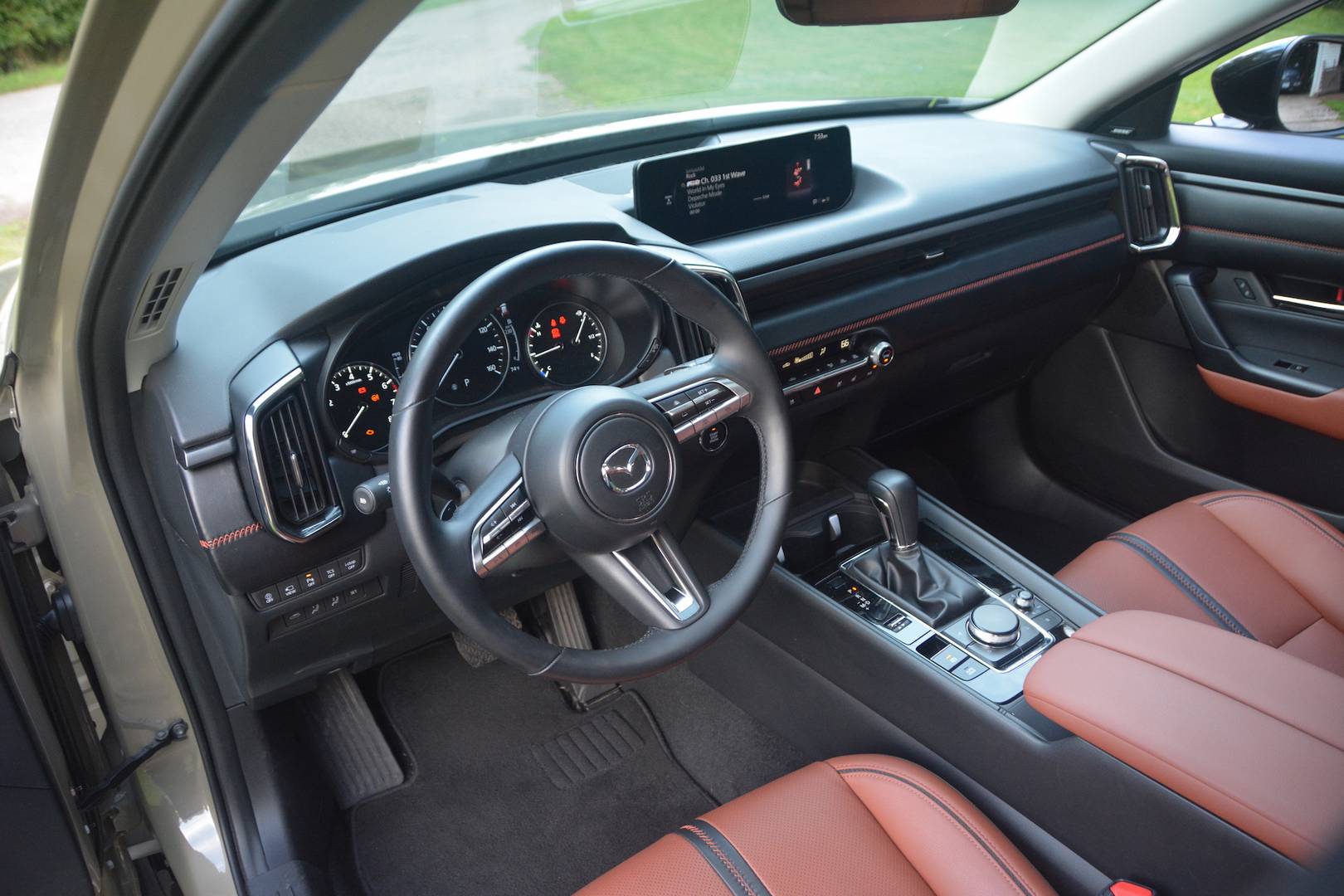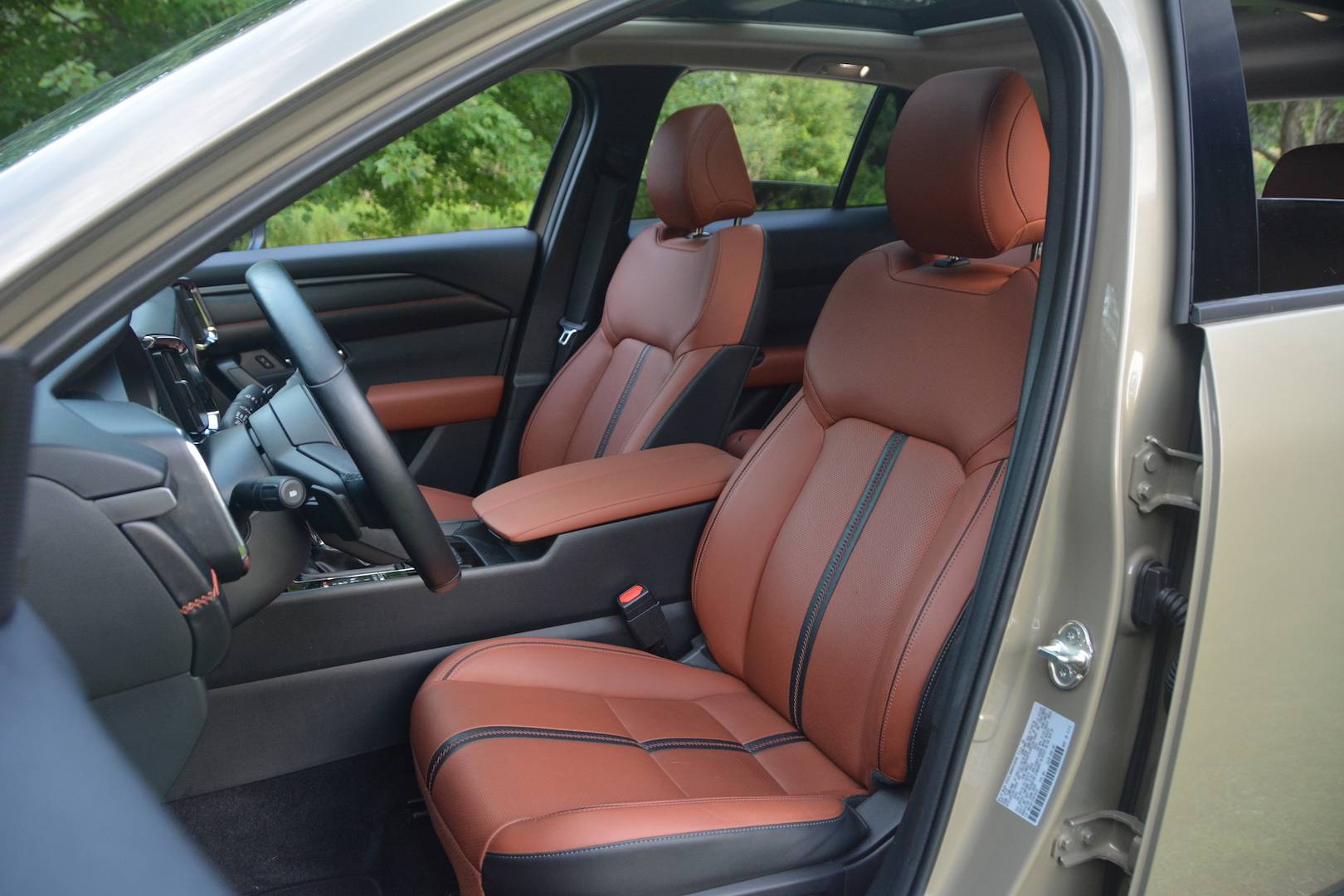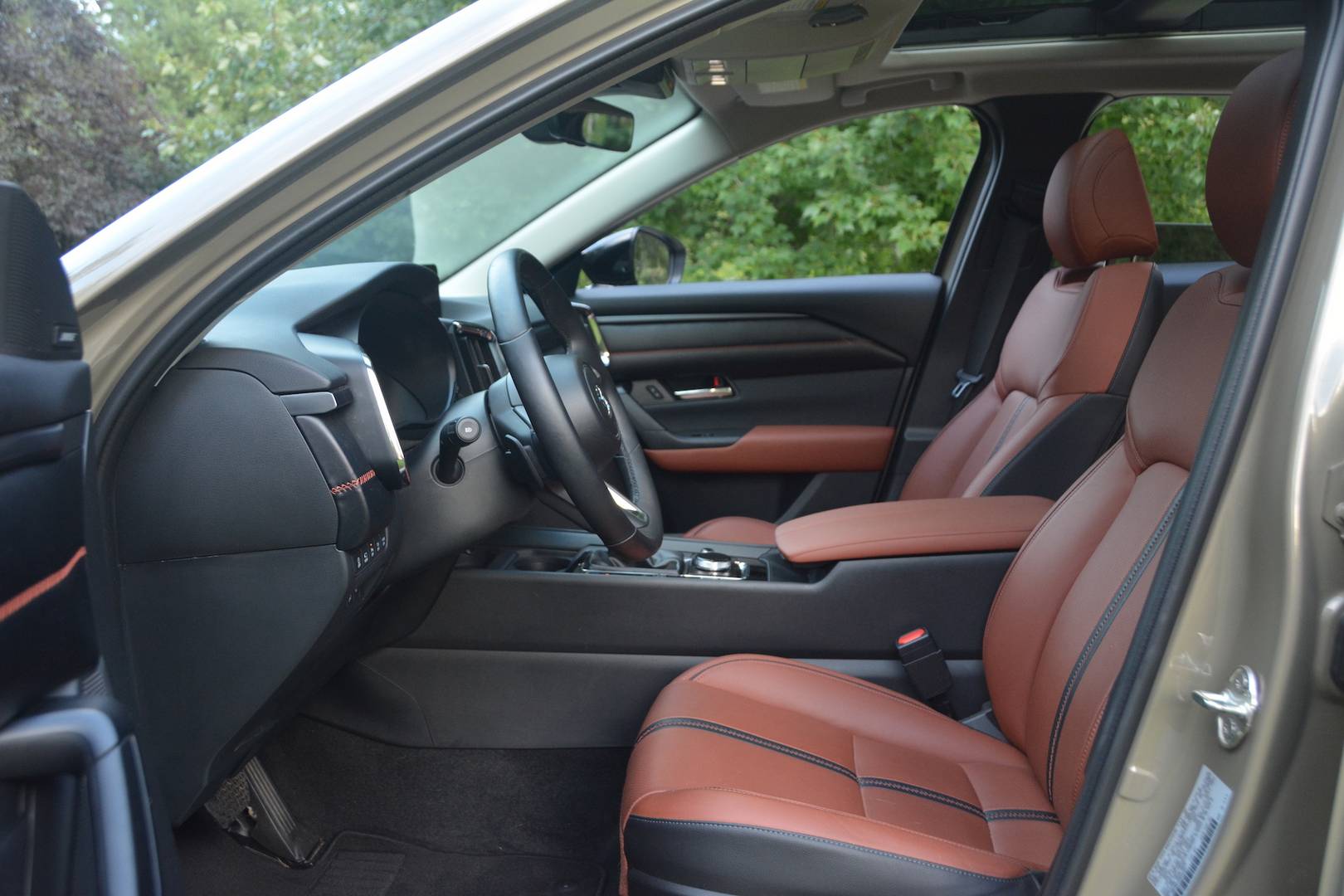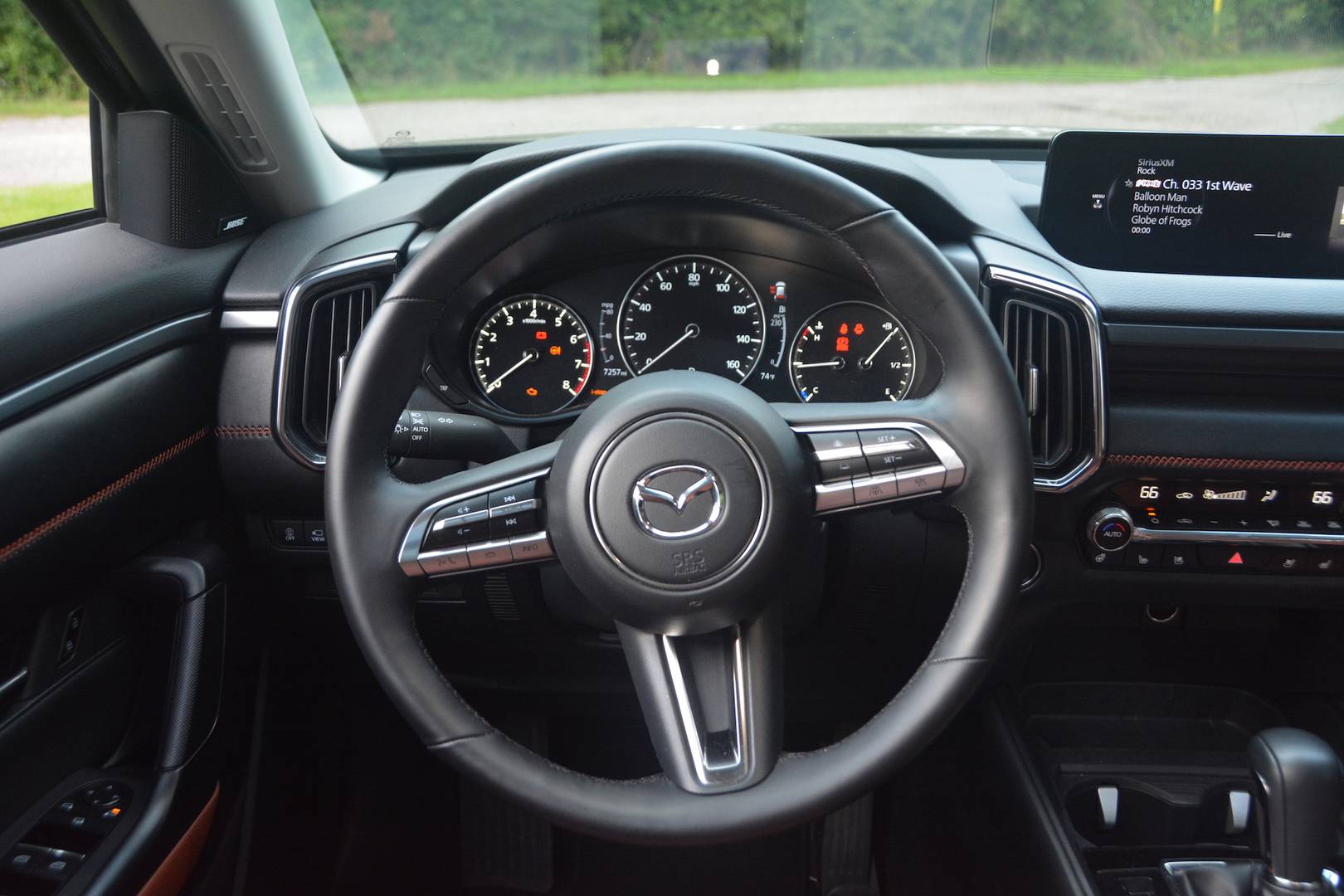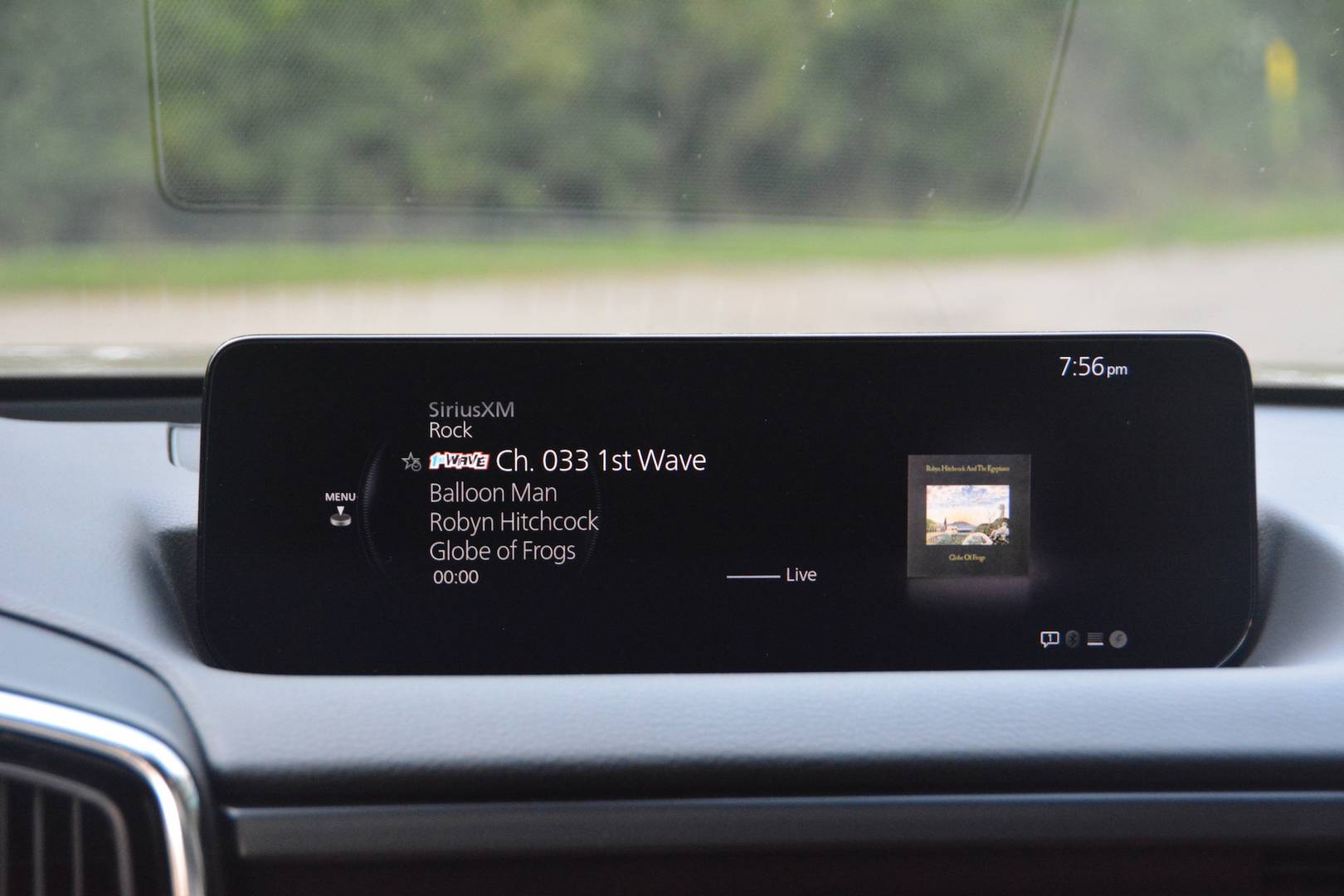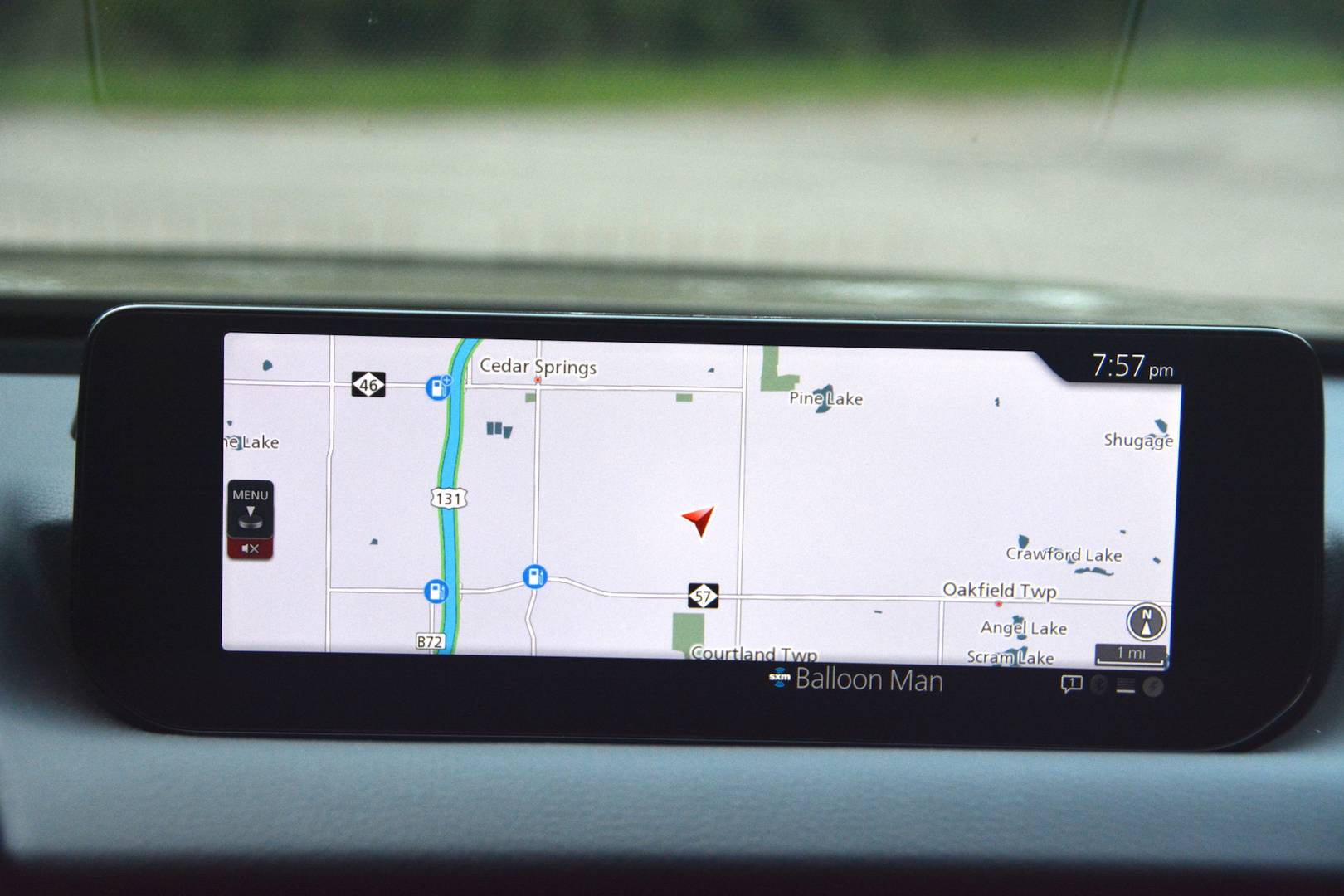I’ve always been fond of the little SUV’s that Mazda puts out. While they’re not fast or especially sporting, they’ve got plenty of mid-range grunt, are comfortable, and can haul quite a bit of our day-to-day detritus. They’re also fairly attractive, which is important in the crowded segments they inhabit. After all, nobody wants to drive an ugly car. But they never really had any…machismo. No, the CX-3, CX-5, and CX-9 were attractive in a pretty but young professional kind of way. So when Mazda introduced the CX-50 last fall, I found myself leaning in towards my monitor for a better look.
The CX-50 has a more muscular design. Swollen, muscular fenders and broad wheel arches. A wide, flat hood. Aggressive and hungry-looking intakes and vents. It looks…rugged. Capable. Dare I say…tough. This didn’t have that “young-mother-headed-to-Target” look. This looked like something a guy with a beard and a pair of rock climbing shoes might climb out of. It was really sharp looking. So we hurriedly asked Mazda if we might spend some time driving one. They graciously agreed and delivered to us a turbocharged AWD Premium Plus model that was priced in the low-forties USD.
The car we received was wearing an interesting color paint that Mazda referred to as “Zircon Sand Metallic.” What’s Zircon Sand, you may ask. Well, as it turns out Zircon sand is an ancient mineral sand that is mined only in Southern Africa and Australia and is used in the ceramics and foundry industries. And while it comes in several different colors, when we Googled it, the pictures that came up where the same color as our CX-50. It’s an eye-catching color and we had several people comment on it while we had it.
The inside was equally eye-catching. It was called Terracotta – for good reason – as the color-blocked Terracotta leather in the black and gray interior looked fantastic. I have to give credit to Mazda for their Premium trim level interiors. They are so inviting and comfortable, so pleasing to the eye, that you can’t help but be impressed. Lesser trim levels have to make do with more boring colors and plain design but the Premium level hits it out of the park. Or the Zircon Sand pit. Whichever.
Under the hood, coupled to a 6-speed automatic transmission and a capable AWD system, is a 2.5L turbocharged four-cylinder Skyactive gasoline engine that delivers 227 hp and 310 lb-ft of torque. This engine moves the CX-50 along decently, and though you’re not going to win any races with it, it will surprise you. In my experience, when launching from a light, it initially felt slow. Looking down at the speedometer, I’d see the needle swinging past 25 mph towards 30 mph. I’d look up to check traffic, then look back at the speedometer only to find it sweeping past 70 mph. So it’s slow off the line but it’s got prodigious amounts of mid-range and upper-range power. This makes it a bit of a shark in freeway traffic. You’ll find yourself dicing through traffic like an F1 champ catching up after a slow pit stop. On the highway, stepping out to pass someone was never an issue. There was truckloads of torque available to slingshot it past slower traffic and get you safely back in your lane. So it’s got it where it counts. Mazda rates it’s towing capacity as 3500 lbs, which is decent.
The suspension is compliant but sporting. You may initially judge it as too soft, but you soon realize that the first inch or so of travel is soft but then things firm up and the suspension delivers capable performance. After awhile, you learn to trust it when it begins to lean into a sweeping corner because you know it’s going to firm up and absorb any bumps effortlessly while keeping the stability and agility that Mazda’s are known for. We never encountered any roads that were too lousy to upset it – and we encountered some lousy roads. The ride remained compliant and accommodating and comfortable.
The brakes were admirable. Pedal feel was excellent and performance was excellent as well. They repeatedly hauled the little SUV down from serious speeds with no drama and reassuring stability.
We logged quite a few miles in the CX-50 and found that we really enjoyed it. It was comfortable on long drives, enjoyable to drive, and surprisingly quick. It felt wider and more spacious inside than the CX-5, which we assumed it was based upon. As it turns out, it’s actually based on the CX-30 platform but enlarged slightly to make it a mid-sized SUV. Whatever. It works. The infotainment system/sat-nav system is improved this year over those found in the CX-5 and CX-30.
Fuel efficiency was impressive. We drove it hard all week and never had to refill the tank, which was an unexpected surprise. Most of the SUV’s we drive need at least one fill-up while we have them and they generally have larger tanks than the CX-50.
The CX-50 2.5 naturally-aspirated model starts at $27,550. The CX-50 Turbo starts at $37,150 and is worth the $10k premium for the additional power. The CX-50 Turbo Premium Plus like we had starts at $43,250. That’s not much money for a decent little SUV and that makes it worth checking out.
Overall, we liked the CX-50 Turbo AWD Premium Plus. It’d be nicer with a little more power, but it does pretty well with what it’s imbued with. The warmth and design of the exterior and interior drew us in, but the perky engine and the smooth suspension won us over.

